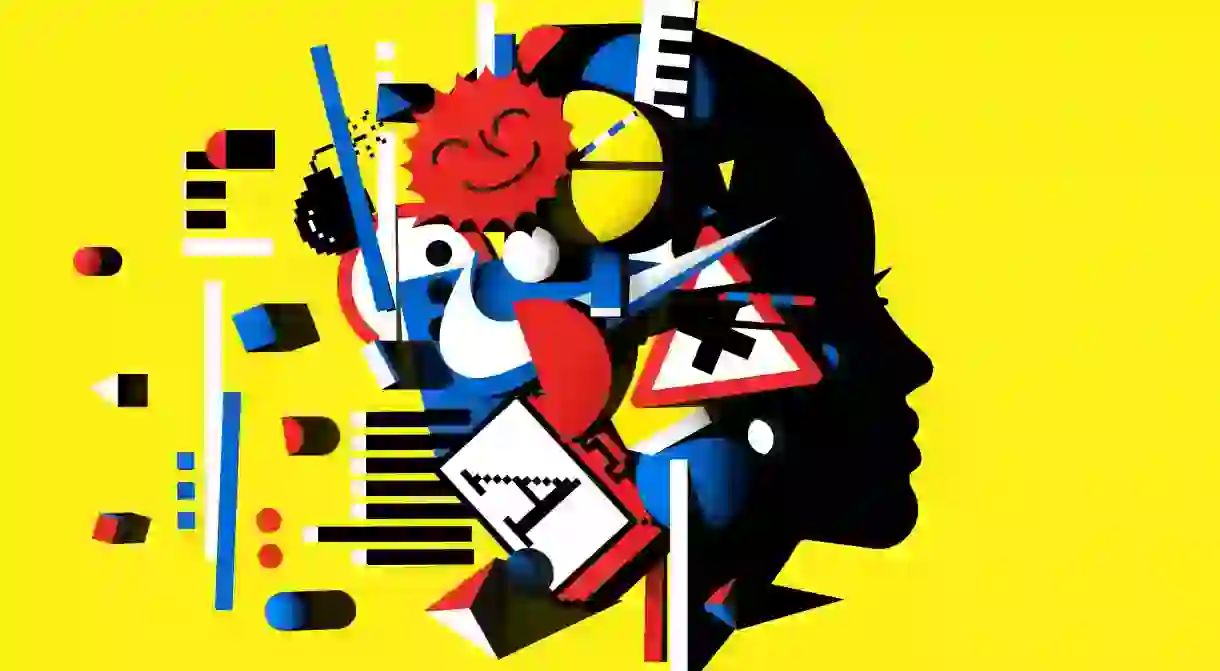Iconic Logos Created by Female Designers Around the World

Though graphic design remains a largely male-dominated field, many of the world’s most well-known logos and design identities were created by female designers. To celebrate International Women’s Day, here are nine projects you’ll recognise that were designed by some of the most talented creatives in the world – all women.
Susan Kare’s Apple icons
Susan Kare’s designs are some of the most globally recognisable ever. The graphic designer is the creative force behind the original icons for Apple’s Macintosh, such as the classic “happy computer”, the ominous bomb and the wristwatch. Many of them have lived on in altered forms since Kare introduced them in 1982. The Museum of Modern Art in New York, which acquired her original graph paper drawings for the icons, calls her “a pioneering and influential computer iconographer”. Kare continues to create the language and tools with which we live our lives online; she’s made emojis for Facebook and icons for PayPal, among many other projects.

Carolyn Davidson’s Swoosh for Nike
The story of how Carolyn Davidson created Nike’s famous Swoosh logo is a career fairytale. Davidson was a student at Portland State University when she met Nike co-founder Phil Knight, who enlisted her first to do some general graphic design work and then to design a logo for his new shoe brand. According to legend, she was paid just $2/hour when she created the Swoosh in 1971 and Knight didn’t immediately love it, but decided to go with it. The Nike logo went on to become a resounding success, and Davidson was eventually awarded stocks in the company – and a place in design history.

Margaret Calvert’s road signs
Her name is nowhere near as well known as it should be considering Margaret Calvert’s work has probably been seen by every single person in the UK – and by millions of people visiting the country. The typographer and graphic designer created the road signs for Britain’s motorway network in the late 1950s, together with Jock Kinneir. They introduced a new typeface, Transport, and Calvert designed the pictures for a number of the signs. She has also worked with The British Airports Authority, British Rail, and the Tyne and Weir Metro. In 2011, Calvert was elected a Royal Designer for Industry.

Marina Willer’s Tate identity
Current Pentagram partner Marina Willer used to work for brand consultancy Wolff Olins, which reinvented British art gallery Tate’s identity in the 1990s. In order to bring all of its four sites together under one umbrella, Tate needed a strong visual identity, and Willer was the woman for the job. Her 1998 logo for the gallery lasted until 2016, and the updated version is a new take on the same idea; proof that Willer’s original concept is still going strong.

Annie Atkins’ designs for Wes Anderson
Good films can be so absorbing that they feel like a world of their own. This is the case for director Wes Anderson’s films, but creating his candy-coloured universes requires a lot more work than viewers might realise. Annie Atkins, who specialises in graphics for filmmaking, makes fictional worlds come to life. Her job is to make all the graphics in a film; for example, she designed the millennial pink Mendl’s boxes in The Grand Budapest Hotel (2014). Atkins also worked on the graphic design for TV shows Vikings and Penny Dreadful, as well as Anderson’s Isle of Dogs (2018).

Ruth Kedar’s Google logo
The Google logo, which many of us see daily, has become one of the most ubiquitous in the world. It was created by Ruth Kedar, who made the original Google logo in 1998 and has described it as “playful and deceptively simple. The design is so subtle as to look almost non-designed, the reading effortless”. It has since been updated, but Kedar’s Google design lasted for almost two decades and is easily one of the most famous logos around.

Anne Lund’s Ban Nuclear Power logo
A bright orange, smiling sun on a yellow background with the words “Nuclear power? No thanks” became the global symbol for the anti-nuclear movement in 1975 and is still used today. It was designed by Anne Lund, a Danish activist with no design background. She says the activists wanted a logo that was “positive, cheerful and above all polite.” Lund signed over the rights to the symbol to the Danish Organisation for Information about Nuclear Power and never made any money from it, but her design made a difference – Denmark voted no to nuclear power.

Muriel Cooper’s logo for MITP
Muriel Cooper was the first design director of the MIT (Massachusetts Institute of Technology) Press, and the first woman to get tenure at its Media Lab. She worked at the MIT for 40 years and her legacy lives on, not least in MIT Press’ iconic logo, which she created in 1965. The clever design resembles book spines while also spelling out “MITP”. And Cooper wasn’t just an excellent graphic designer; today she’s remembered as much for her groundbreaking work in digital and interactive design.

Paula Scher’s identity for The High Line
One of the most well-known graphic designers in the world, Paula Scher was the first woman to become a partner at Pentagram. She created the identities for many well-known US institutions, including Citibank and Tiffany & Co. Scher also designed the identity for the High Line – the elevated Manhattan park created from an old, elevated rail structure. Her beautiful, pared-down designs for the park give the public space a luxurious feel, and is a great example of how good, everyday design can improve the look of a city.














